Santa Cruz Island – A Quick Visit
Everyone knows the saying, “When life gives you lemons, make lemonade” and that’s exactly what I’m about to do as I head out to Santa Cruz Island for the day. One of the main reasons I have headed to Oxnard, California for the North American Travel Journalists Association (NATJA) annual conference is to spend the night camping on Santa Cruz Island in Channel Islands National Park. I was one of four lucky journalists chosen for this most enviable opportunity. All camping gear and food is provided. All we have to do is bring the wine and our cooking skills.
You’ve heard about the drought in California that’s been going on for years, right? Well I just managed to break it. My unerring ability to bring shitty weather with me wherever I travel has extended to California. It’s been cool and overcast for two days and now on the day we were to camp overnight it’s pissing down rain and forecast to get worse. Unfortunately the trip planners are ultra cautious and the camping has been cancelled. That’s the bad news . The good news is that we are still going out for the day. My plan for making lemonade is to try and spot two of the rarest species on earth – the Island Scrub Jay and the Island Fox. The former can only be found on Santa Cruz Island and the fox on a couple of the islands that make up the national park. People literally come from around the world to add these species to their life lists. So let’s hope my lack of luck with the weather doesn’t extend to wildlife watching.
Channel Islands National Park
Within eyesight of many of the 18 million people who call the greater Los Angeles area home, are a chain of five islands that have a history of human habitation dating back over 13,000 years and yet are now devoid of permanent residents. Only designated as a national park in 1980, Channel Islands is one of the newest parks in the system and is in the process of transforming back to the ecosystem that existed before ranching and the military did its best to destroy the marine and onshore habitat that makes these islands unique. Santa Cruz Island is the largest of the archipelago and the one most frequented by visitors. About one-third is owned by the National Park Service and the other two-thirds by the Nature Conservancy, so it’s now protected, hopefully for all time.
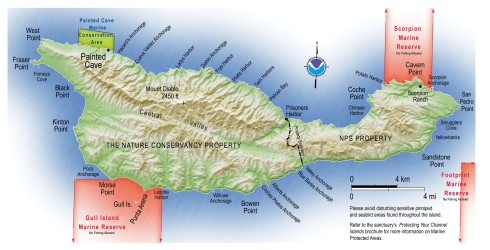
Santa Cruz Island is a mecca for both hikers and sea kayakers. I was planning to do both while staying on the island, but as this is now a day trip only I’ve decided to forego the kayaking in favour of bird and fox watching.
Getting to Santa Cruz Island is not a problem. Island Packers has been doing it for fifty years with a fleet of boats out of Ventura Harbor that can take day trippers and campers to any of the five islands. It costs $59.00 for a return trip. This morning there is a large group of very rowdy school kids and a surprising number of campers considering that it is raining and foggy. The good news is that conditions are very calm and there’s a good chance of seeing whales on the way to Santa Cruz Island, even if I can’t see the island itself.
The trip out takes well over an hour and about half way we do spot two fin whales, which are the second largest animals to ever have lived on earth, after the blue whale. They don’t seem perturbed by the boat and cross the bow a number of times before disappearing into the depths.
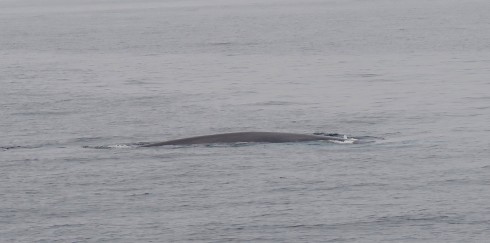
Finally Santa Cruz Island looms into view out of the fog and mist and I hear a chorus of screams from the front of the boat. Apparently a hump-backed whale has just breached close to the boat, scaring the hell out of a lot of people and causing a rush to the front. The humpback is a friendly fellow who obligingly does the flipper slap over and over for his audience.
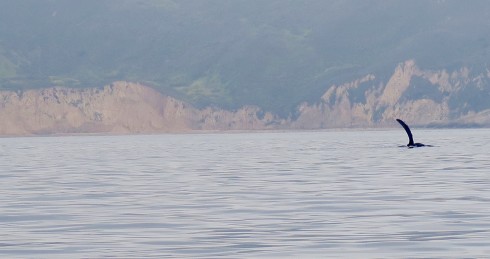
Then he does another breach which I almost catch on camera before he disappears below.
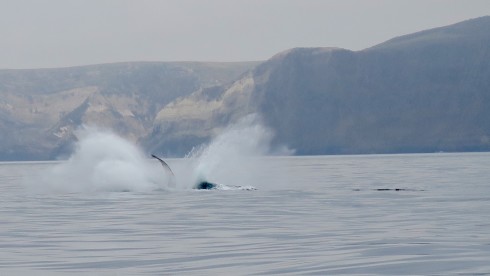
Santa Cruz Island
Santa Cruz is a large island at over 96 square miles with mountains as high as 2,000 feet. It was once one giant ranch, but now is criss-crossed with hiking trails through chaparral and sage brush. Huge eucalyptus trees are found in the valleys. The first stop is the pier at Prisoner’s Harbor where all the school kids and most of the campers disembark.
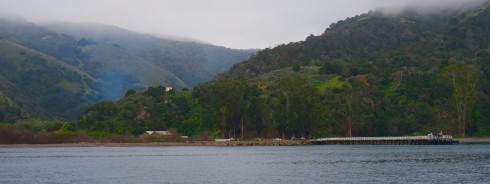
The rest of us continue on to Scorpion Ranch where the pier has been condemned and the only way to land is by zodiac.
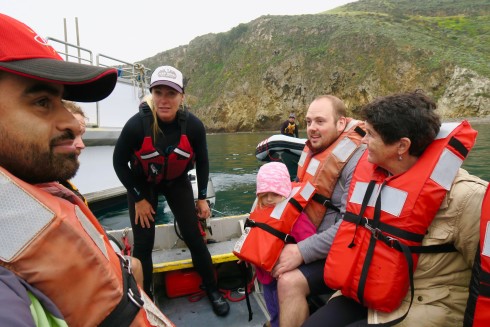
On the way in I look up at Cavern Point and can see the tiny shapes of hikers at the top. That’s where I’ll be heading.
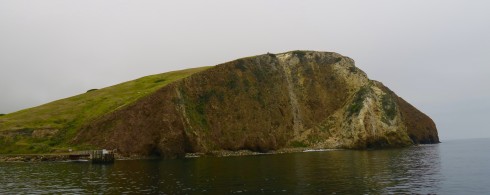
On shore we get a quick lecture on safety and then we are on our own for about three hours before it’s time to head back. The first bird I see is not the island scrub jay, but this larcenous raven that demonstrated its ability to undo zippers in a flash and scrounge inside for anything edible.
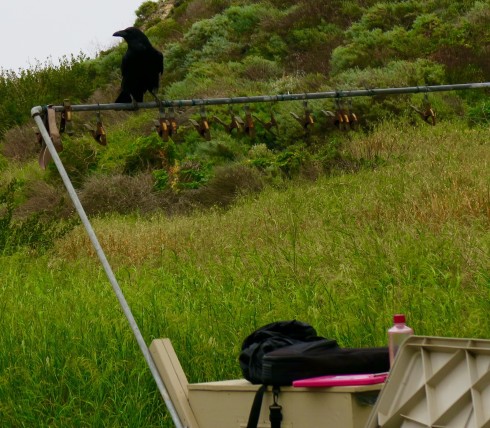
Near the landing there is a small house that serves at the interpretive centre and that was my first stop. On the way I passed an old ice-house and noticed that someone had made a sculpted pattern by welding together ice tongs.
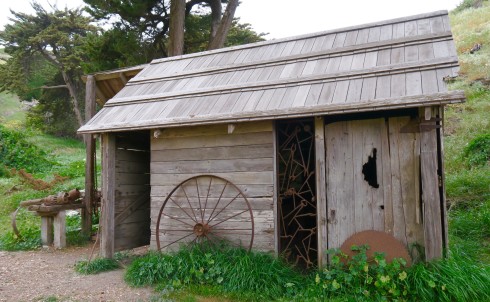
There was also a lot of farming detritus nearby.
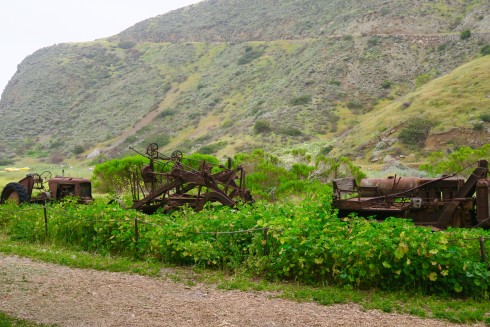
In the interpretive center I learned that the entire island had once been part of a single self-sustaining ranch operation.
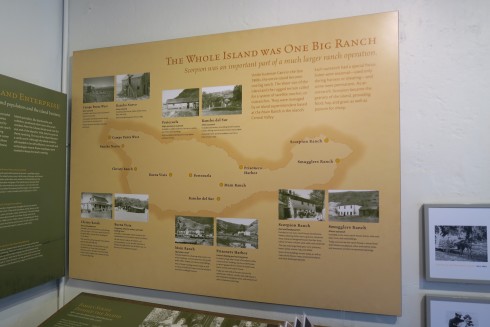
Time now to go look for the scrub jay and fox. I’d learned from questioning a guide on the boat that sightings of the scrub jay were not guaranteed and sometimes people would look for days without seeing one. The foxes were another matter and could be reliably counted on to be hanging around the campground which was a couple of hundred yards away under a grove of huge eucalyptus trees.
I had barely gone a few hundred feet when I saw a blue flash in a thicket close by. I was pretty sure it was a scrub jay when it flew out from the brush and landed on top a branch and sat there as if he was posing for me. My luck has turned! Here is possibly the rarest bird in the United States – the island scrub jay which has evolved on Santa Cruz Island to be almost double the size of its on shore California cousin.
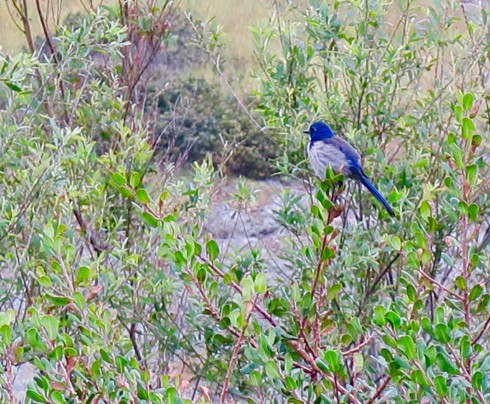
Next I walked to the campground and there were two foxes just sitting there looking as cute as a button. They are gorgeous looking little creatures found only on the Channel Islands and apparently each island has its own subspecies. I learned something very interesting about the foxes at the interpretive center. By the 1990’s they were almost wiped by predation from golden eagles which had only appeared on the Channel Islands after bald eagles, which do not prey on foxes, were wiped out by DDT. Today the golden eagles have been relocated and the bald eagles are back, leaving the little foxes safe to roam about the island without worrying about being snatched from above.
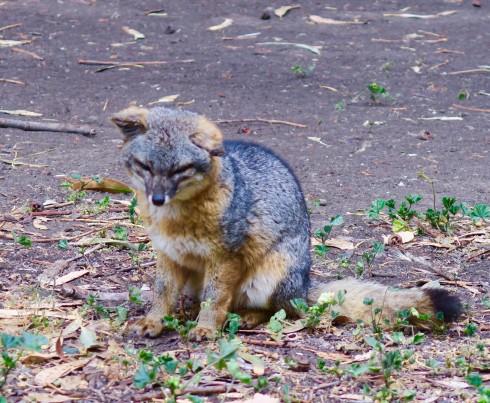
OK, so I’ve accomplished the two things I wanted to on Santa Cruz Island within a half hour of landing. Time now to climb up the the top of Cavern Point. Thanks to the on and off rain the trail has turned into pure mud which sticks to my hiking boots in such quantities that it feels like I’m walking in high heels. But the slog to the top is worth it. The giant coreopsis is native to Santa Cruz Island and is found everywhere on the plateau.
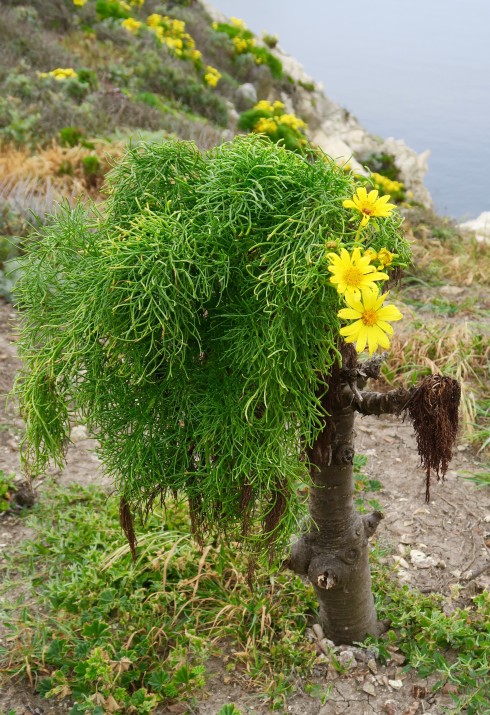
The view from the top is spectacular and reminds me of the Cliffs of Moher in western Ireland.
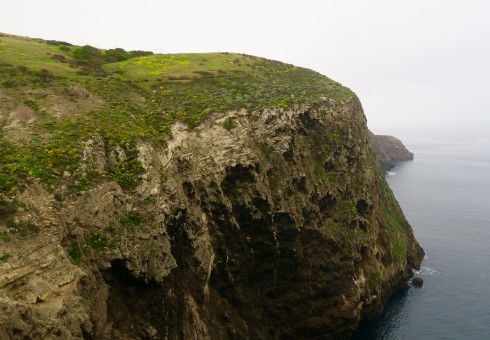
Combine the coreopsis and the cliffs and you get an even better picture.
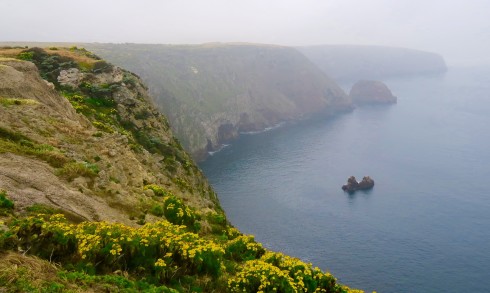
At the top I run into this elderly docent who comes out each day to wander the island and dispense advice on the flora, fauna and history of Santa Cruz Island – now that’s volunteerism!
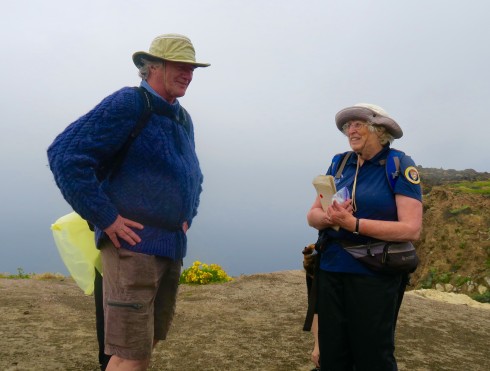
The trail is a loop that follows the contours of the cliff back to the Scorpion Ranch landing. On the way I spot those who chose to kayak on the water far below.
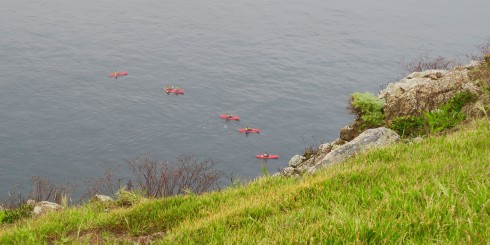
And then the three boats moored at Scorpion Ranch.
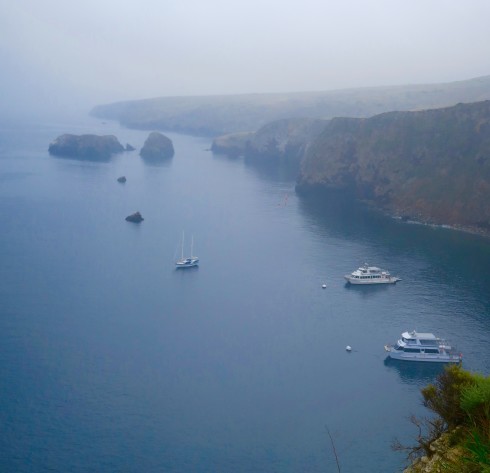
And finally the landing area below.
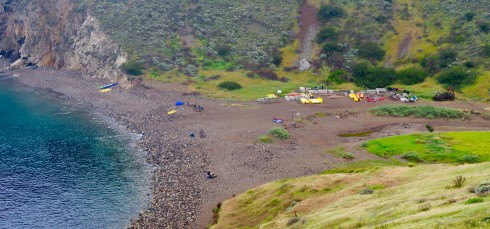
The three hours has gone by in what seems like a flash and I have a real moment of regret that this is all the time I’ll have on Santa Cruz Island, but then again it sure beats not getting here at all. So long my little feathered and furred friends. Enjoy you island paradise.
During my stay in the Oxnard area I also got a chance to walk historic downtown Ventura, see the amazing collection of French automobiles at Mullin Automotive Museum and tour the Ronald Regan Presidential Library. It’s a great area of the state with an abundance of attractions.

